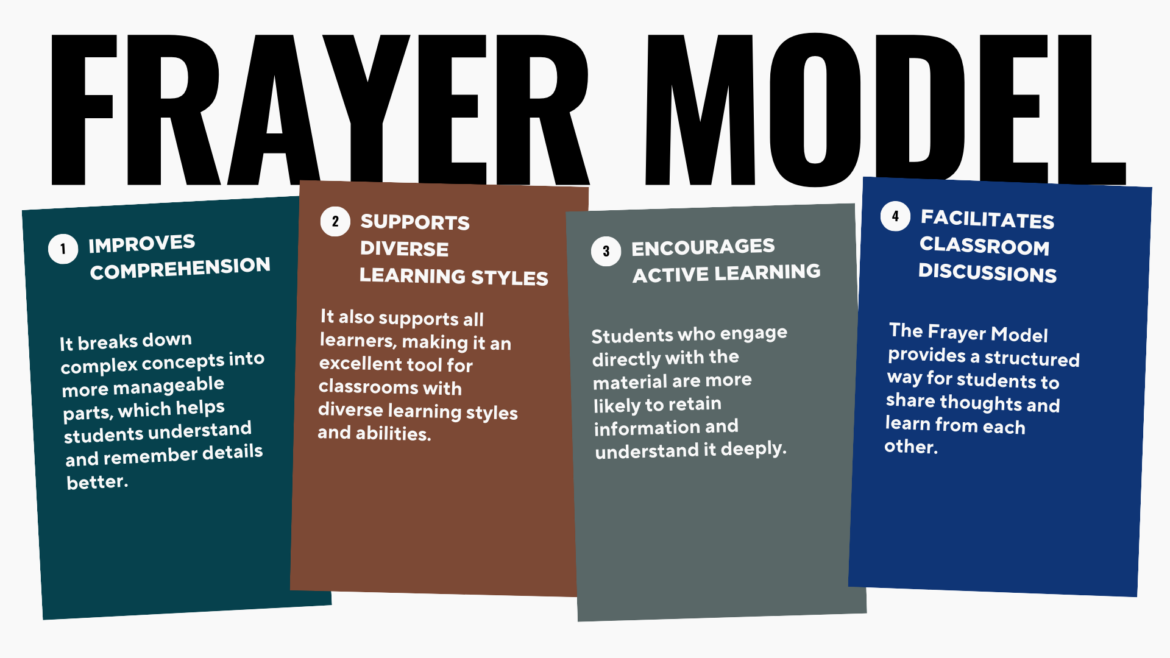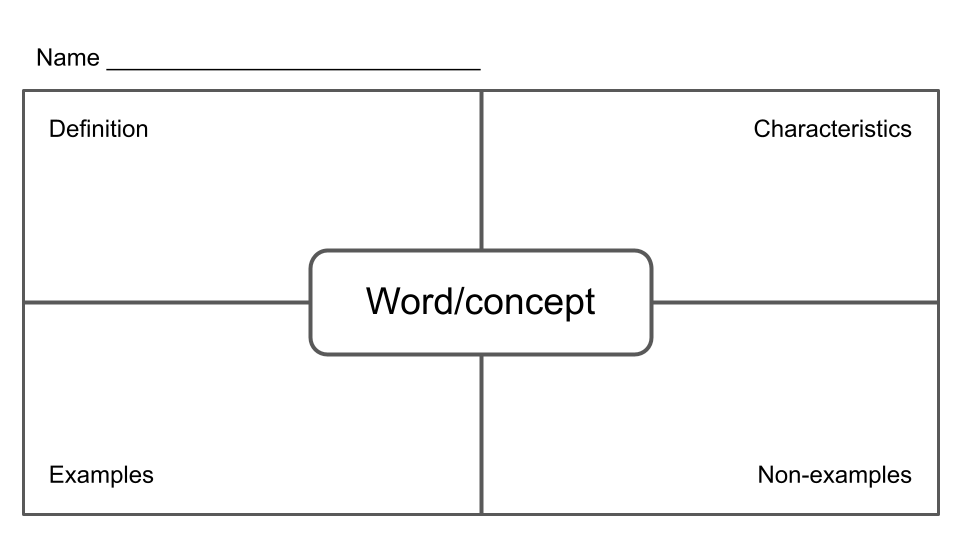How often do you encounter students who can memorize terms but struggle to apply them in context? What if there was a tool that could not only help students remember vocabulary but also deeply understand and apply these concepts? This tool is not new but might be one of the most underutilized in our teaching arsenal. Let’s take a look at how the Frayer Model can bridge the gap between rote memorization and true conceptual understanding.
What is the Frayer Model?
The Frayer Model is a graphic organizer that was originally developed by Dorothy Frayer and her colleagues at the University of Wisconsin in 1969. It was part of a project to find effective ways of teaching high school students new concepts. But, it is a helpful graphic organizer for students all the way down through early elementary. Since we all have concepts and academic vocabulary to teach that are foundational to our content area, the Frayer Model is a perfect tool to build into as you scaffold students’ understanding and mastery of critical pieces of your content. Initially, the Frayer Model was meant to be used for students in reading and language arts. However, it soon became popular for use in other content areas as well.
The Benefits of the Frayer Model

The Frayer Model offers several advantages that can greatly enhance student learning. Plenty of research underscores the value of using the Frayer Model with your students at appropriate times. Here are some of the benefits:
- Improves comprehension: It breaks down complex concepts into more manageable parts, which helps students understand and remember details better.
- Supports diverse learning styles: It also supports all learners, making it an excellent tool for classrooms with diverse learning styles and abilities.
- Encourages active learning: Students who engage directly with the material are more likely to retain information and understand it deeply.
- Facilitates classroom discussions: The Frayer Model provides a structured way for students to share thoughts and learn from each other.
The Graphic Organizer
In the center of the graphic organizer is the main concept or vocabulary word. Each outside quadrant is designated for a particular aspect of the learning that you want your students to learn. Traditionally these have been designated for the definition, characteristics of the word/concept, examples, and non-examples. Based on what you are teaching, you can change the quadrants to be more relevant if needed to support more targeted learning…such as using the word in a sentence, drawing a picture of the word/concept, etc.
While this has traditionally been a paper-pencil activity, we can easily bring the Frayer Model into the digital age. Access the Frayer Model Template using Google Slides and adapt it to make it your own! You will notice that the template includes several different examples for different grade levels and content areas to get you started. Consider using this as you check for prior knowledge, introduce critical concepts, or even as an exit ticket at the end of a lesson. You could also use this with digital tools like Figjam, Canva, PowerPoint, Microsoft Whiteboard, or Excalidraw.
Using the Frayer Model Template
There are several ways to use the template. Before sharing, you may want to adapt the examples to your grade level and content area to help students better understand with relevant examples that they can refer to as needed. These instructions are given for using the template within Google Slides but can be adapted for other platforms.
Method 1: Using the Template with a Whole Group
Share the Frayer Model template with the class giving everyone edit rights. Instruct them to each create a new slide (whether individually or working with a partner). They should first type their name in the top area to designate that the slide is theirs to edit. Assign each student (or pair) a word or concept to learn about. As they learn about the concept or word, they update their slide. Others can comment on quadrants and give additional insights, examples, non-examples, etc. Using the template in this manner makes it great for test review. It can also be the equivalent of a digital word wall that students can access on their devices when needed.
Method 2: Using the Template with Individual Students
Update the template slide deck as needed. Have students make a copy of the slide deck to their Google Drive, share a copy with them directly, or provide a “make a copy” link. Direct students to add a new slide for each word/concept and begin filling them in. Feel free to adapt the quadrants as needed. For example, change the non-example quadrant to now have students insert an image of the word or concept. Or they can find and share a YouTube video about the word or concept as a resource.
Regardless of what you teach and the grade level(s), be sure to add the Frayer Model to your teacher bag of good pedagogy tricks. These are great supports for ESL students and can be adapted for gifted students to extend beyond the regular expectations.


